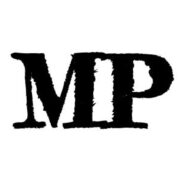
2018
Oil on canvas
Image courtesy of Rachel Howard
Rachel Howard sits down with Erik Sommer to talk about her use of control and chance, misappropriating material, the importance of drawing, and the privilege of living with art in the house.
I never follow the instructions.
(ES) Describe your work for us.
(RH) I do not have a style per se, as I do not like to corner or restrict myself. I like to paint what I want, when I want and why I want. But in broad brush strokes (‘cuse the pun) I sway between abstraction and figuration, using control and chance as a vehicle to get what I want- which is usually playing with the ideas of uncertainty, playing with the edges of things.
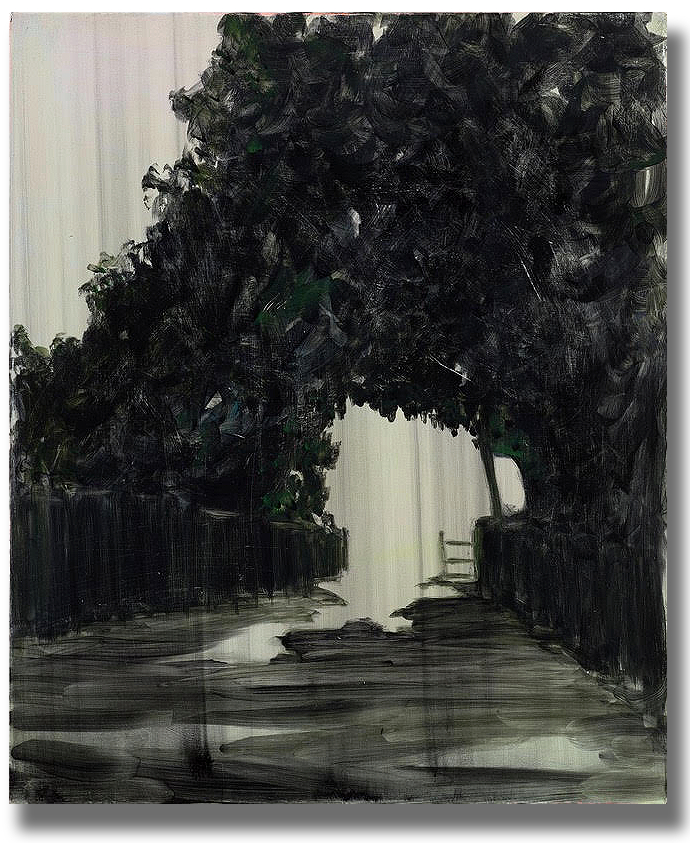
2018
Oil on canvas
Image courtesy of Rachel Howard
Tell us a bit about your background. Where did you grow up?
I grew up in the north of England, on a farm near the sea close to a coal mine. In my teens it was a time of political unrest during the miners strike. I went to a Quaker school for Sixth form, and although I am an atheist this had a huge affect on my life. Religion, violence, silence and states of mind have continued to be subjects I return to time and again.
Where do you live and work now?
I divide my time between London and a farm in the West Country. There is this walkway at the back of the farmhouse and I like to paint it from time to time. I find it relaxing to paint the view, something figurative and hopefully to keep my eye in. They are usually titled Reasons …
How do you think this has influenced your work?
I paint what concerns me on a micro and macro level so strangely I do not think where I am influences what I make. Actually, having said that, I am lying as I started making carved sticks/staffs titled Sisters and Daughters a few years back which are cut from hazel trees and are great to carve and peel patterns into. I paint and also stick things on the end; they can be weapons or supports, tribal wands. When I worked in the city I used household paint, a utilitarian medium used for doors and skirtings, but I was making fine art paintings with cans of gorgeous fluidy gloopy paint. It was like working with runny honey. I like contractions and irreverence to high art especially in regard to painting- tipping this hallowed ground on its head through the misappropriation of material.
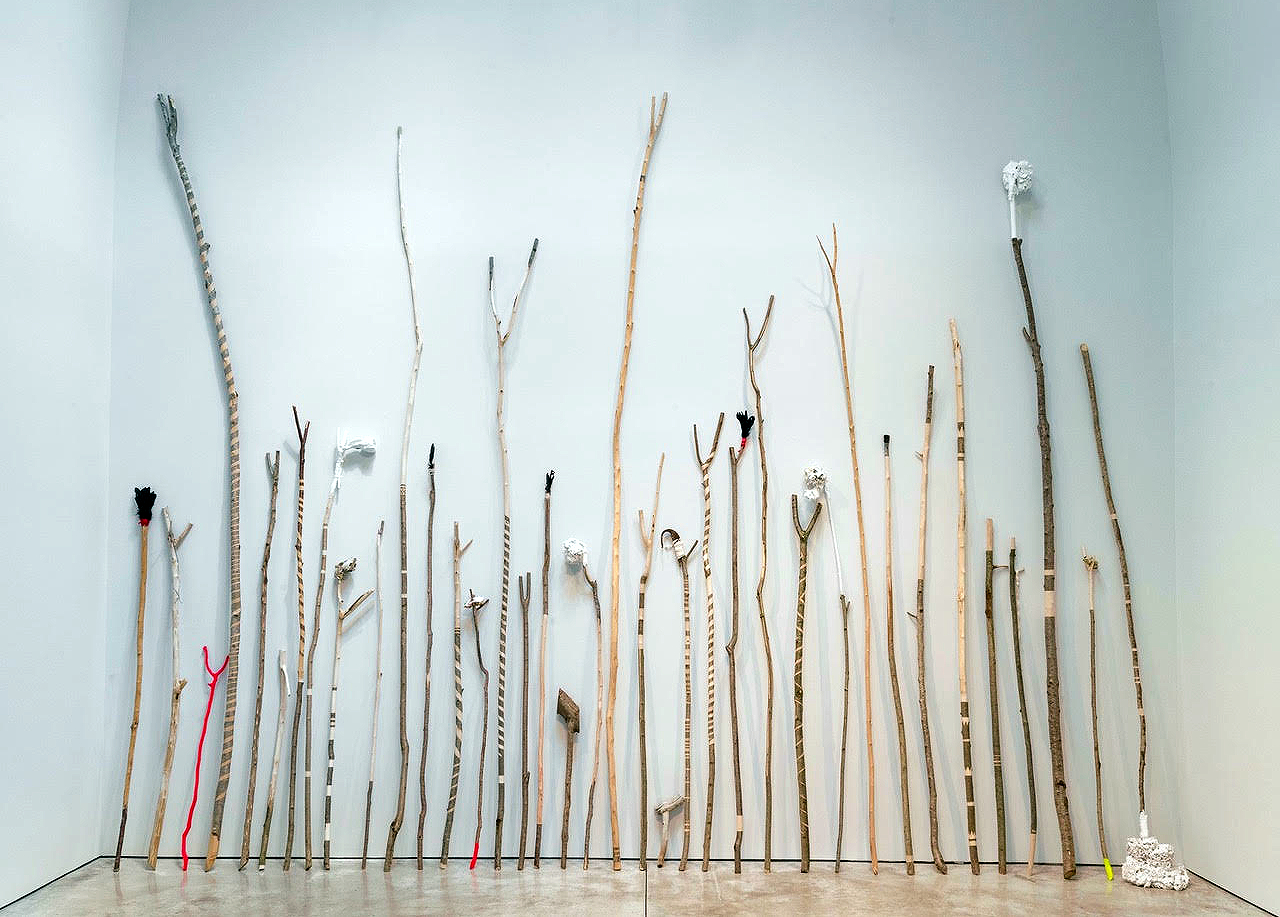
2019
Installation
Image courtesy of Rachel Howard
Do you remember any artists as a child that captured your attention?
My uncle was a hobby painter and actually worked as a chemist making paint in a huge factory. I think he had these kits he would buy to make art; it was the ’70s so there was some pretty bonkers stuff he made. I remember a swirly piece on their living room wall made of what looked like doorknobs on a sort of astral background. Not your usual pastural scene.
Any artists you are looking at today?
I love art. I have done a lot of swaps over the years and buy work from time to time. It is a privilege to live with art in the house.
How does your background in Art History affect your painting? Do you consciously make decisions based on the canon of Painting?
This is a big question. I studied Fine Art and Art History at Goldsmiths in the late ’80s early ’90s. To try and make art and learn about art history is a form of self flagellation. Goldsmiths was very conceptual and I wanted to paint; it wasn’t until I was in my mid twenties that I found my feet. It was then that I truly appreciated my studies and my breadth and depth of my awareness of art history. So I gorged on knowledge and then spent the next however many years purging, clearing my mind of the burden of the weight of art history. To my mind it is important not to revere the past too much; a healthy dose of irreverence is paramount. I also love the idea of high and low reference, so I trawl the internet from time to time garnering information and imagery.

2019
Oil and acrylic on canvas
Image Courtesy of Rachel Howard
Your work is often described through contrariety: control and chaos, layer and removal. How important is it that the viewer be able to see these contradictions?
I think to feel these contradictions as opposed to seeing them would be more accurate. For example, when I use opposing gravities I will work on a canvas upside down for weeks and then flip it and work the other way, which results in a hovering of paint, a sort of suspended movement. I use gloss varnish to move paint down and across the canvas, but also in any other which way to get that illusive feeling of stasis and movement. I will build the oil layers up from a usually fluorescent background, and sand it back, showing vestiges of what went before. On my lined, grid paintings I will build up a structure, a grid, web, mesh of paint, using a t-square, then knock it all back, unpick it with varnish and turps in a way that hovers between control and chaos. I do not like being in complete control of the elements. Chance and serendipity are important too. Worlds of paintyness.
What is your normal studio practice like? Any routines or superstitions?
I like not to know what I am going to do when I walk in to my studio. I like to see where the day will take me. Drawing plays an important part of my practice too. Drawing is my go-to if I am getting stuck with my paintings. I feel there is less pressure. I also like to sweep my studio floor- it’s calming!
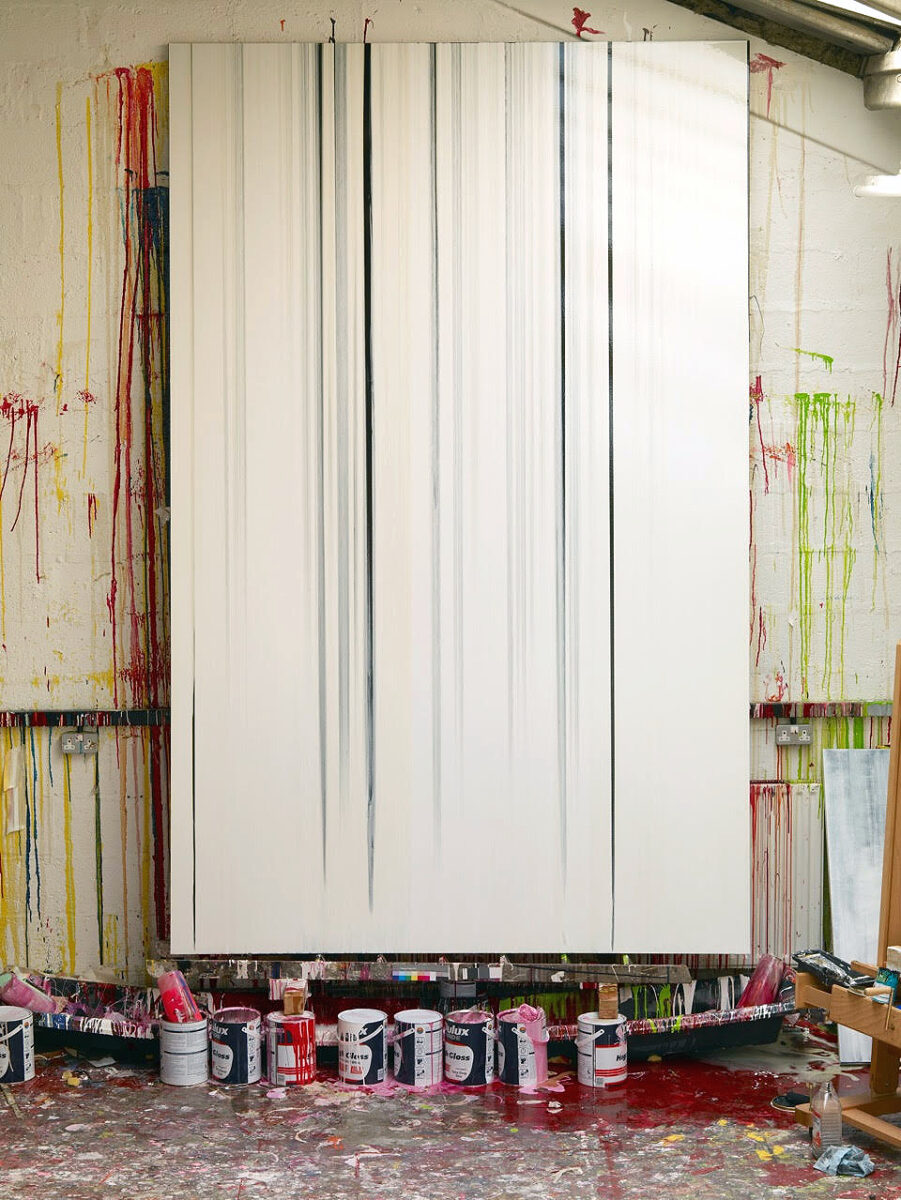
Image courtesy of Rachel Howard
What is your approach when attempting to figure out the characteristics of the materials you use?
You know when you read the instructions on bottles, tubes or cans of paint or varnish or drying mediums? I never follow the instructions. I think that through my impatience and experimentation I have found ways to manipulate paint to do other things than it is supposed to do. I have spent years playing with paint, getting to know the medium, getting it to do what it is not supposed to do. For example, when I worked with household gloss back in the ’90s I discovered that when a can of gloss paint sits for weeks the gloss medium separates from the pigment. I would syphon that off into jugs and paint with the pigment, then use the treacle-like gloss to pull the paint down the canvas, using gravity as my invisible paint brush. I often feel like an alchemist, tweaking and altering my proportions and medium in order to get the desired ‘feeling’.
Are you more interested in the process or the end result?
The end result is most important, but achieved through a sometimes abstruse process.
What about your working technique? Walk us through how you start and then develop a piece.
I like to work on 3 or 4 pieces at a time. I do not want to put too much onus on one canvas, or myself. Also, it is good to have comparisons. One canvas may be working well, it is usurped by another, then it sneaks up and ousts another out which will either be destroyed or set aside for some months. Multiple canvases as a single piece is something I really enjoy. I have made two significant large bodies of work: Repetition is Truth Via Dolorosa 2005-2008, which I exhibited in museums in Naples and London, is comprised of 14 large scale paintings and one small canvas. The work is a contemplation on human rights atrocities from the Crucifixion to Abu Ghraib’s Ali Shallal al Qaisi. Paintings of Violence (why I am not a mere Christian), which was exhibited at MASS MoCA in 2018-2019, is ten paintings and one sculpture sharing a room with Joseph Beuys’ Lightning with Stag in its Glare. There is a real liberation in working on such scale and with multiple canvases as one installation.
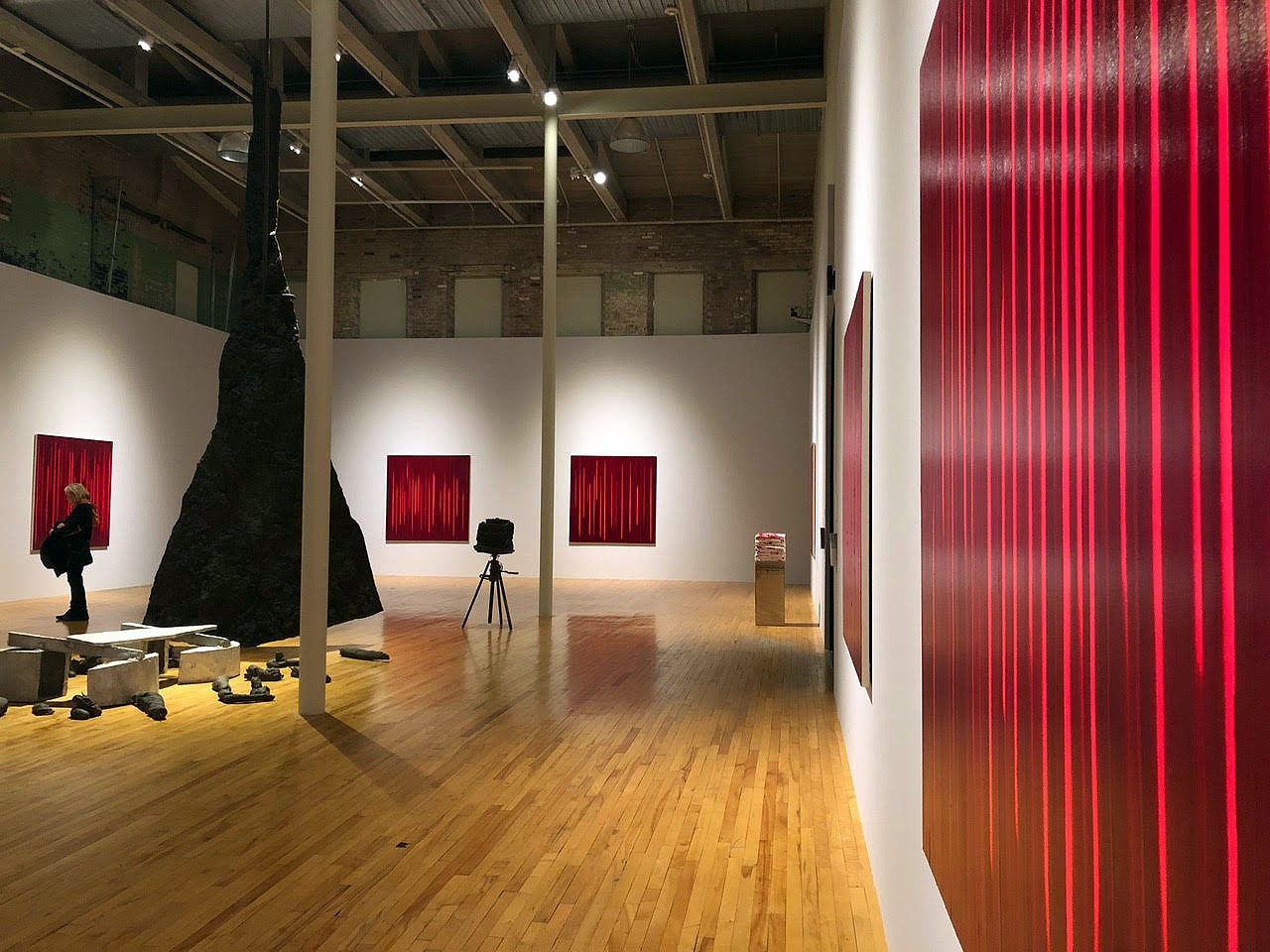
2018-2019
MASS MoCA, USA
Installation
Image courtesy of Rachel Howard
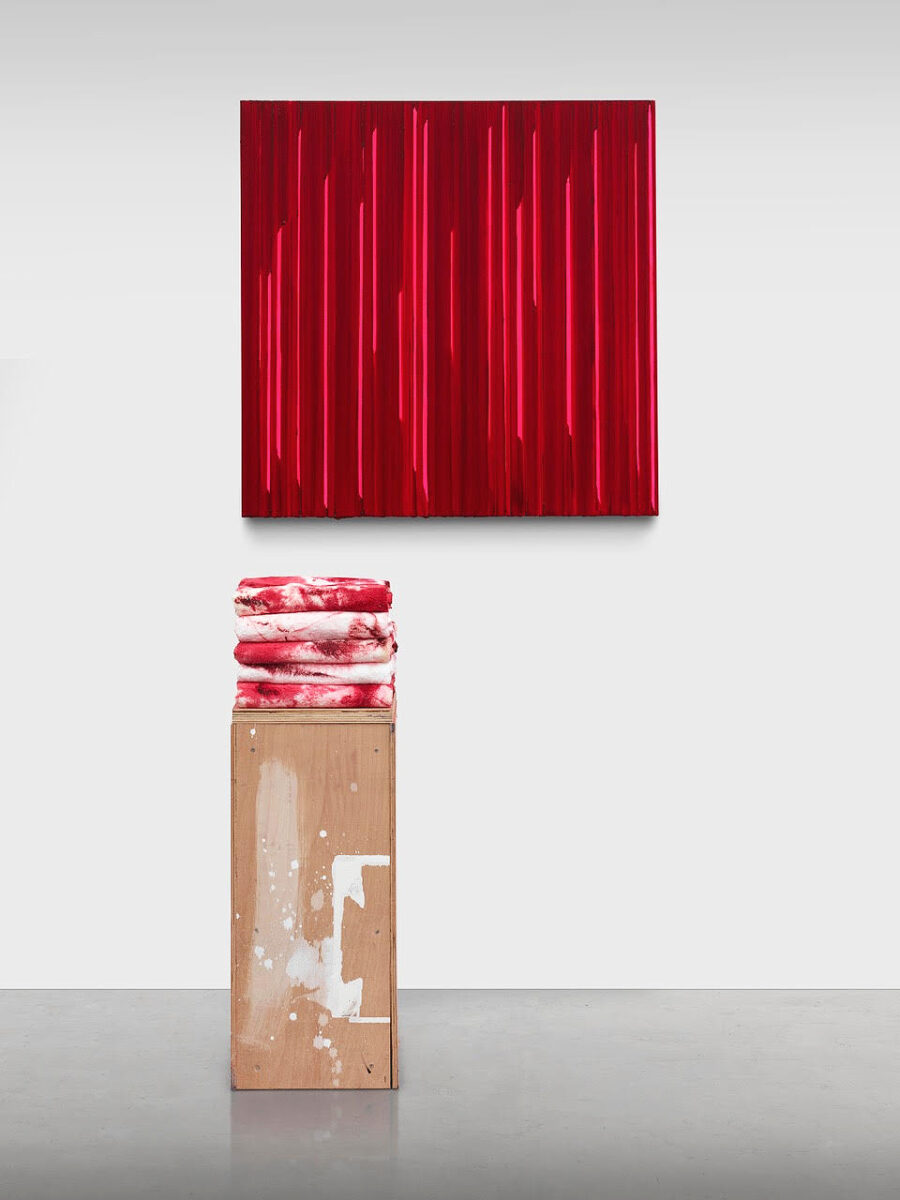
2016-2017
Oil and acrylic on canvas, wood, 5 towels, pigment
Image courtesy of Rachel Howard
What current themes do you see in today’s art world?
It is lock down here in the UK so everyone is self-isolating. So, no change for most artists I suppose. It has irked me a little that everyone is saying it is a great time to be creative. I think for me I am observing more, reading a lot, writing too. Painting yes but thinking about the edges of things, not confronting ‘it’ face on. I think time is needed to incubate and contemplate this silent maelstrom. However, I have been harvesting a long list of titles as the language of COVID-19 is very appealing to me.
What excites you the most about the current art world?
Artists who are not distracted by the noise and viewers who take the time to look. I mean really look.
Any recent or upcoming projects?
Right now I am just painting. All the shows I was supposed to be in have been postponed. Who knows what the future will look like. It is a good time to step back and block out the noise and paint.
Finally, what is your favorite color?
Believe it or not it is orange, not red.
To see more of Rachel Howard’s work visit her website.
